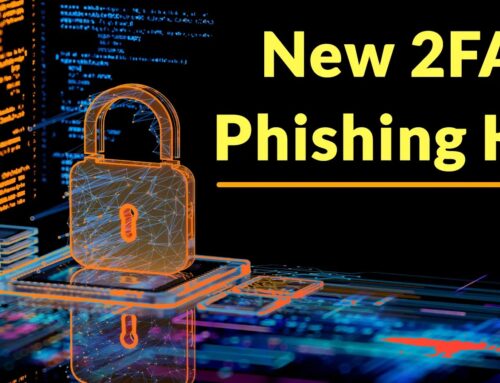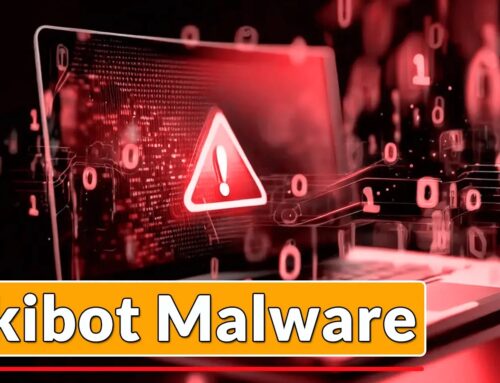
Hackers Using Leverage Tuoni C2 Framework Tool to Stealthily Deliver In-Memory Payloads
The Invisible Threat: Understanding Tuoni C2 and In-Memory Payloads
The cybersecurity landscape is constantly evolving, with threat actors continuously refining their tactics to evade detection. A significant development in this ongoing arms race is the increasing leverage of sophisticated Command and Control (C2) frameworks like Tuoni. This new wave of cyberattacks utilizes Tuoni to deliver malicious payloads directly into system memory, a technique designed to bypass traditional, disk-based security solutions.
For IT professionals, security analysts, and developers, understanding the mechanisms behind Tuoni and in-memory attacks is no longer optional. This blog post delves into the specifics of this emerging threat, its operational advantages for attackers, and crucial remediation strategies to protect your digital assets.
What is the Tuoni C2 Framework?
The Tuoni C2 framework represents a new generation of offensive security tools used by threat actors to maintain stealthy control over compromised systems. Unlike older C2 models that often relied on easily detectable disk-resident components, Tuoni facilitates the deployment of payloads directly into a system’s volatile memory (RAM). This “living off the land” approach leaves minimal forensic artifacts on the disk, making detection and analysis significantly more
challenging for security teams.
The allure of in-memory execution for attackers lies in its ephemeral nature. Once a system is rebooted, much of the malicious presence can vanish, effectively wiping the slate clean and complicating post-incident investigations. This method significantly raises the bar for detection, requiring more advanced behavioral analysis and memory forensics capabilities.
The Stealth Advantage: How In-Memory Payloads Evade Detection
Traditional endpoint detection and response (EDR) and antivirus (AV) solutions often focus on scanning files stored on disk for known signatures of malware. However, when payloads are executed directly in memory, these traditional defenses become less effective. Here’s why:
- Diskless Operation: There are no malicious files written to the hard drive for scanners to detect.
- Signature Evasion: Without a file to analyze, signature-based detection mechanisms are bypassed entirely.
- Volatile Nature: As memory is volatile, evidence of the attack can disappear after a system restart, hindering forensic efforts.
- Process Hollowing and Injection: Attackers often use techniques like process hollowing or injection to insert their malicious code into legitimate running processes, further obscuring their activities.
The use of Tuoni, as highlighted by Cybersecurity News, indicates a sophisticated understanding by attackers of modern security architectures and their limitations. This necessitates a shift in defensive strategies.
Remediation Actions: Fortifying Against In-Memory Threats
Combating C2 frameworks like Tuoni and their in-memory payloads requires a multi-layered and proactive defense strategy. Focusing solely on disk-based detection is no longer sufficient. Here are key remediation actions:
- Enhanced Endpoint Detection and Response (EDR): Implement EDR solutions with advanced behavioral analytics capabilities. These tools monitor process activity, API calls, and network connections for anomalous patterns indicative of in-memory attacks, rather than relying solely on file signatures.
- Memory Forensics: Develop capabilities for conducting live memory forensics. Tools that can dump and analyze RAM can reveal malicious code or activity that never touched the disk.
- Network Traffic Analysis (NTA): Monitor network traffic for unusual C2 communications. Even with in-memory payloads, attackers still need to communicate with their C2 server. Look for irregular protocols, unusual data volumes, or connections to known bad IP addresses.
- Application Whitelisting: Implement strict application whitelisting policies. This prevents unauthorized executables from running on your systems, even if they are delivered in-memory.
- Principle of Least Privilege: Enforce the principle of least privilege across your environment. Restricting user and application permissions minimizes the potential damage an attacker can inflict if they gain a foothold.
- Regular Patching and Vulnerability Management: Many sophisticated attacks still rely on exploiting known vulnerabilities for initial access. Ensure all systems and software are regularly patched. For example, staying updated on vulnerabilities like CVE-2023-XXXXX (Note: Replace with a relevant, recent CVE if available and applicable to general C2 entry points) is critical.
- User Awareness Training: Educate users about phishing and social engineering tactics, which are frequently used to initiate the attack chain that ultimately leads to C2 framework deployment.
Recommended Tools for Detection and Mitigation
Several tools and technologies can aid in detecting and mitigating threats posed by in-memory C2 frameworks like Tuoni:
| Tool Name | Purpose | Link |
|---|---|---|
| Volatility Framework | Memory Forensics, Malware Analysis | https://www.volatilityfoundation.org/ |
| Sysinternals Process Monitor | Advanced real-time monitoring of file system, Registry, and process/thread activity | https://learn.microsoft.com/en-us/sysinternals/downloads/procmon |
| Velociraptor | Endpoint Visibility and Digital Forensics | https://docs.velociraptor.app/ |
| CrowdStrike Falcon Insight | Endpoint Detection and Response (EDR) | https://www.crowdstrike.com/products/endpoint-security/falcon-insight-xdr/ |
| Palo Alto Networks Cortex XDR | Extended Detection and Response (XDR) | https://www.paloaltonetworks.com/cortex/xdr |
Conclusion: Adapting to an Evolving Threat Landscape
The emergence of C2 frameworks like Tuoni, specifically designed for in-memory payload delivery, underscores a critical shift in adversary tactics. Relying solely on traditional, disk-based security mechanisms is a perilous strategy. Organizations must adopt advanced EDR, NTA, and memory forensics capabilities to gain true visibility into their systems and effectively counter these stealthy threats. Proactive vulnerability management, robust access controls, and continuous user education form the bedrock of a resilient cybersecurity posture in the face of this evolving challenge.





